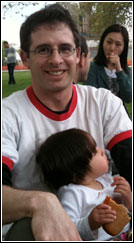Justin’s Japan: Interview with Sake Evangelist/JET Alum John Gauntner
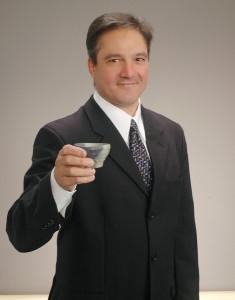
“It was not one big thing but rather a million coincidences that led me to apply for the JET Program. I never, ever imagined I would stay here very long, much less 24 years (and counting)!” (Courtesy of John Gauntner)
By JQ magazine editor Justin Tedaldi (CIR Kobe-shi, 2001-02) for Examiner.com. Visit his Japanese culture page here for related stories.
Known as the Sake Guy or the Sake Evangelist, John Gauntner (Kanagawa-ken, 1988-89) is the world’s leading non-Japanese authority on the nation’s signature beverage, penning numerous books on the subject and touring the world with his popular seminars and speaking engagements.
An Ohio native who currently resides in Kamakura, Gauntner returns to America next week to anchor Rice & Water: The Building Blocks of Premium Sake, this year’s annual sake lecture and tasting at New York’s Japan Society on June 19. The Evangelist will introduce the importance of rice and water in sake brewing, and a special sake tasting reception with more than 30 kinds of premium sake will follow.
It actually was the result of countless coincidences. I did not plan it, really. I just got interested in sake, and after drinking with a friend that worked at the The Japan Times, he asked me to write a piece for them. That led to a column, which led to a book, which led to another. I got involved in the industry so I could study more and that led to my involvement in export and education. I didn’t really choose this path; it chose me.
What attracted you to Japan originally, and how did you get the opportunity to first go there?
Again, I have to say that it was not one big thing but rather a million coincidences that led me to apply for the JET Program. I never, ever imagined I would stay here very long, much less 24 years (and counting)!
As a participant in the early days of the JET Program, what things about Japan and its people do you feel have changed for the better since then?
I was in Kanagawa and participated in JET for two years, ’88 and ’89. But I have been here the whole time, and the changes have taken place so gradually it is hard for me to see them. Certainly, though, a familiarity with people from other countries has changed—for the better!
For the complete story, click here.

"Every chance I get, I would like to perform. I feel that in order to keep this genre of music alive, the younger generation of Japan needs to be exposed to it more often. I am happy that I am able to keep my current younger fans and gain new ones." (Guan Barl)
By JQ magazine editor Justin Tedaldi (CIR Kobe-shi, 2001-02) for Examiner.com. Visit his Japanese culture page here for related stories.
Since becoming a star in Japan in 2008 for his interpretations of enka, or Japanese ballads, singer Jero is now poised to make his New York debut at Japan Society on June 9 withLet’s Enka! with Jero, where he will perform a selection of karaoke-accompanied enka classics and talk about his childhood, his trailblazing success, the challenges he’s faced and his love for the uniquely Japanese genre of music.
Born Jerome Charles White, Jr., the 30-year-old Pittsburgh native was born of mixed Japanese and African American heritage. He was exposed to enka and the Japanese language as a child by his grandmother, a native of Yokohama. Jero’s first single released in Japan, “Umiyuki” (“Ocean Snow”), entered the top five of the national pop charts, which helped the fledgling vocalist win Best New Artist of 2008 at The 50th Annual Japan Record Awards.
Following his Japan Society debut concert, Jero will participate in a rare meet-and-greet with fans, selling and signing his CDs as well as special Jero tote bags, the proceeds of which will be donated to JERF, the Japan Earthquake Relief Fund, set up by Japan Society in the wake of 3/11. In this exclusive interview, I caught up with Jero on his difficult pre-stardom days in Japan, the turning point that encouraged him to perform in America, and his role as a global envoy of enka.
Your New York debut will be held at Japan Society. How did this come together?
I received an e-mail for the event asking me to perform. I forwarded the e-mail to my manager and there you have it!
Tell us a little about your previous live performances in North America. What were your expectations and how were the shows received?
My very first performance in the U.S. [in 2008] was at my alma mater, the University of Pittsburgh. Two years later, I was given the opportunity to perform in L.A. and San Francisco. I actually was against performing in the U.S. because I wasn’t sure how it would be perceived by the U.S. audience, as all the songs are in Japanese. I received a lot of positive feedback after those performances, which gave me a confidence I never had before.
You’ve said before that you would like to keep performing on the Japanese New Year’s Eve music program Kohaku Uta Gassen every year and continue to get younger audiences listening to enka. How do you feel this has been going so far, and how do you feel about introducing enka to a younger generation of fans?
Every chance I get, I would like to perform. Because the enka audience has decreased every year, outlets to perform have also decreased. I feel that in order to keep this genre of music alive, the younger generation of Japan needs to be exposed to it more often. I am happy that I am able to keep my current younger fans and gain new ones.
For the complete story, click here.
Read an exclusive interview with Jero from the winter 2009 issue of JQ magazine here.
JQ Magazine: JQ&A with Director Regge Life on ‘Live Your Dream: The Taylor Anderson Story’
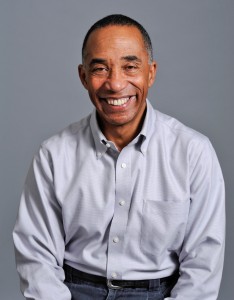
“‘Live Your Dream’ is principally about Taylor, but it is actually the story of all the JETs who come to Japan, so I really want to look at what the experience is for a variety of people and how that experience changes both the teacher and the students they interact with.”
By Renay Loper (Iwate-ken, 2006-07) for JQ magazine. Renay is a freelance writer and associate program officer at the Japan Foundation Center for Global Partnership. Visit her blog at Atlas in Her Hand.
Live Your Dream: The Taylor Anderson Story is the latest work by filmmaker and Global Film Network founder Regge Life, who has been making groundbreaking films for over two decades including the acclaimed Doubles: Japan and America’s Intercultural Children, and most recently Reason to Hope, which chronicles the events surrounding the 2010 Haiti earthquake. Live Your Dream not only shares the story of JET alum Taylor Anderson (Miyagi-ken, 2008-11) who tragically lost her life in the 2011 tsunami, but it also seeks to celebrate the lives of those who live their dreams and inspire others to make a difference. JQ caught up with Life to discuss the film, which is being prepared for a November release.
Your relationship with Japan spans over two decades. What stirred you to first go there, and how has this relationship grown over time?
This is a question with a very long answer, so let me try to be brief and to the point as possible. Japanese film has always intrigued me, so as a young filmmaker I would watch marathons of Japanese films at a cinema on Eighth Avenue called the Elgin. After years and so many movies, I was introduced to the Creative Artists Program of the NEA and Bunka-cho, and that is how I went the first time to witness the making of Tora-san #43.
How has it grown? Well, leaps and bounds. Four completed films, almost four years in residence in Tokyo, and a current feature project in development for almost 10 years.
What inspired you to make this film and document Taylor’s story?
Like most people, watching what was happening [during the time of the tsunami and earthquake] was mind-boggling and devastating. I have never been to Ishinomaki before, but I have been to Hachinohe, Morioka, Ichinoseki, and other parts of the region; so when I saw water rushing over rice fields like that and trucks and cars being carried—I just couldn’t believe it. It was devastating [to watch] for someone who has never been there before, but when you have been there, you [can better understand] the magnitude of what was happening. So at that time I’d just finished the film about Haiti, and from my work there, I realized there was probably going to be a story that needed to be told: something that no one would cover.
I don’t remember where I saw the fist e-mail about Taylor’s story or how it came to be, I just remember reading about her online. I made a few calls and one thing lead to the next, and slowly but surely, I was able to get in touch with Taylor’s family. And even still, it was all about timing. As a parent, I would have completely understood if no one got back to me. Then suddenly, I got this email from Andy, Taylor’s father. Giving him credit, he did his due diligence and did some research on me and became familiar with my work. [This all happened] at a time when they were swarmed by the media, so I took my time and we worked as they were comfortable.
Every step of the way, I checked in. Andy connected me with some of Taylor’s friends from Ishinomaki, so when I went back to Japan, I carved out some time to spend with them. One of her friends picked me up from the train station and that’s when it really hit me. At that time [the devastated area] was pretty much cleaned up—but even still, there was a lot to be done. Visiting Ishinomaki and meeting [Taylor’s] friends solidified it with me. I knew I needed to share her story.
Since this is a documentary about a JET participant, what cooperation did you receive from JET Program itself for the making of the film?
The CLAIR office in Japan was very generous to the film and made a remarkable pledge. We also received support directly from one of the people on staff! The JET alumni chapter in New York City (JETAANY) was also very generous, as well as JETs from all over the U.S. and even abroad.
JETAA Ottawa Newsletter: Q&A with JET Alumnus Colin Rivers on producing a play in Japan
***************
By Gemma Villanueva (Fukushima-ken, 2008-11), editor for the JETAA Ottawa Newsletter. Visit the Canadian chapter’s website here for more stories. Written and photo submissions are always welcome. Please contact the editors at newsletter[at]jetaaottawa[dot]ca.
The Canadian play “2 Pianos 4 Hands” is giving its farewell performances as creators-performers Ted Dykstra and Richard Greenblatt retire from the show. “2P4H” follows the youngsters “Ted” and “Richard” as they tackle their love-hate relationship with piano lessons, exams and recitals. In January, “2P4H” played at the National Arts Centre in Ottawa. The show, which made a three-week stop in Tokyo in 2004, finds itself again in Japan this May.
Colin Rivers (Nara-ken JET, 1997-2000) is now the Theatre Producer/Agent for Marquis Entertainment, which produces “2 Pianos 4 Hands.” I had the chance to ask him about his time on JET, life as a producer and bringing 2 Pianos 4 Hands back to Japan.
What is it like to be a producer?
“A Producer manages the business behind the show. A General Manager does the same thing, but without the risk and the pressure to find the money. A New York theatre blogger sums it up perfectly… “Producers do everything! We are the bank, the therapist, the negotiator, the scapegoat, the creative, and we rarely get credit! I should add it’s awesome. Because I think it is.”
How was your JET experience been relevant to producing?
“The JET experience strengthened my Read More
JQ Magazine: JQ&A with JET Alum Kalu ‘Kaz’ Obuka of Meta-Culture
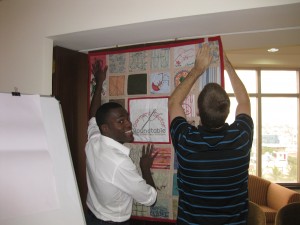
"My time on JET bolstered my thinking that we need better institutions and processes for dealing with difference. To its credit, the prefecture I worked in was definitely ahead of the curve."
By Renay Loper (Iwate-ken, 2006-07) for JQ magazine. Renay is a freelance writer and associate program officer at the Japan Foundation Center for Global Partnership. Visit her blog at Atlas in Her Hand.
Originally from London, Kalu “Kaz” Obuka (Saitama-ken, 2005-08) is currently working as a conflict resolution specialist at Meta-Culture, a conflict resolution NGO in Bangalore, India. Having a unique career fueled by his graduate studies in Coexistence and Conflict at Brandeis University paired with his time on JET, Kaz spent a little time with us to share more.
How did your time on JET influence your decision to take up your particular course of study?
My time on JET bolstered my thinking that we need better institutions and processes for dealing with difference. I think it was seeing the way that the institutions I worked with were absolutely out of their depth when, for example, it came to dealing with pupils with migratory backgrounds. To its credit, the prefecture I worked in was definitely ahead of the curve, and was actively looking to develop mechanisms and services for immigrants to help them navigate what, in some cases, would be a very alien cultural landscape.
Aside from immigration, it was seeing the way politics played out, especially the posturing with which the Japanese and their neighbors engaged one another, and their history.
How did your JET experience help you to secure your position at Meta-Culture?
I think my JET experience helped me to the extent that it bolstered my desire to enter the conflict resolution and consensus building field.
What fields did you work in prior to JET?
Prior to JET I dabbled in the NGO sector with an organization that worked to empower disadvantaged youth in London, as well as PR and some professional modeling.
Justin’s Japan: Interview with Jin Akanishi on ‘Japonicana’ and His American Tour

"The word ‘Japonicana’ comes from Japan, America and Spain. The ‘a’ sound is for the females, so my album is a girl. There’s more than one genre—dance, pop, hip-hop, and R&B. It’s like my baby, because I created it from scratch." (Courtesy of PLAN C Agency)
By JQ magazine editor Justin Tedaldi (CIR Kobe-shi, 2001-02). Visit his Examiner.com page here for related stories.
In his native Japan, Jin Akanishi is a superstar. Since his early teens, he’s achieved fame as a pop idol, singer-songwriter (with the groups KAT-TUN and LANDS), actor, and radio host. After launching a successful American tour in 2010 to sold out (and screaming) crowds, Jin is back in the U.S. supporting his hotly anticipated English-language debut album, Japonicana. Released earlier this month, the disc features production by Grammy Award-nominated trio the Stereotypes (Far East Movement, Ne-Yo) and platinum hit maker Static Revenger (Madonna, Shakira).
Jin takes Manhattan at New York’s Best Buy Theater tonight (March 15) and hits San Francisco’s Regency Ballroom on March 17. In this exclusive interview, I spoke with the 27-year-old about the tour, the making of the album, his love for hip-hop, and hanging out with Justin Bieber.
How would you describe the new album?
The word “Japonicana” comes from Japan, America and Spain. The “a” sound is for the females, so my album is a girl. There’s more than one genre—dance, pop, hip-hop, and R&B. It’s like my baby, because I created it from scratch.
How has the tour been going?
It’s really great. The crowds are great, good energy, dancers, and a lot of drinks (laughs).
What can fans expect at the shows this time? What’s different?
It’s a totally different concert. Everything’s different.
Is there a highlight you can tell us about?
Crazy lights and dancing. All the songs are from Japonicana.
You mentioned that the title represents all the places that influence you—Japan, America and Spain. How have they influenced you?
I’m Japanese, obviously. And America, my mom loves American music and used to listen to it when I was little. I kind of grew up with it. My best friend’s mom is Spanish, and she taught me a lot about the culture. So that’s how I got influenced.
For the complete story, click here.
LIVE YOUR DREAM: The Taylor Anderson Story
*******************
“LIVE YOUR DREAM: The Taylor Anderson Story”is a film project by documentarian Regge Life who is currently seeking support via Kickstarter to help fund the full production of the film.
ABOUT THIS PROJECT
This film is a story about Taylor Anderson and all the young people who travel the world trying to make a difference. Taylor was an extraordinary American who dedicated herself to teaching Japanese children, living her dream right up to the events of March 11, 2011. The earthquake and tsunami in Japan was a disaster that no one could have expected. In my 21 years of working on Japan based projects, I had witnessed earthquakes, but never the devastation of a tsunami.
I had just completed REASON TO HOPE, a film about the 2010 earthquake in Haiti, so I understood all of the events related to the aftermath of an earthquake, but what would be the aftermath when an earthquake was followed by a tsunami and in the case of Japan, a possible nuclear disaster.
CLICK HERE to read more on the Kickstarter site and to help support this project
“American View” interview with JETwit publisher Steven Horowitz on JET involvement in Japan’s recovery efforts
Update 03.13.12: Realized I neglected to mention in the interview The MUD Project, an ongoing Tohoku relief effort organized by JET alum Colin Rennie (CIR Yamagata-ken, 2007-10).
Update 03.12.12: Here’s the interview translated into Japanese
“American View,” a quarterly magazine published by the Press Office of the U.S. Embassy in Tokyo, recently interviewed JETwit publisher Steven Horowitz (Aichi-ken, 1992-94) about the role of JETs and JET alumni in connection with Japan’s recovery efforts following the 3/11 disaster.
American JETs Rally for Japan in Myriad Ways
http://amview.japan.usembassy.gov/en/jet-alumni/
American View: What is unique about disaster relief activities by JET program participants and alumni?
Steven Horowitz: The connection we have to the affected areas and to each other. And the language skills and ability to communicate directly with people in the communities. When you work for the school system, you really get connected to the community. You understand how things work, how kids evolve into adults. You’re part of the community. As a result, JETs are able to identify needs and then reach out to a global community to help fill them in unique ways. I think JETs and JET alumni in some ways were better able to identify needs on the ground than some of the larger, more removed relief organizations, and especially with regard to education-related needs.
問 現役・元JET参加者による復興支援活動にはどのような特徴がありますか。
答 被災地との絆やJET参加者同志のつながり、そして地元の人たちと直接意思を疎通できる日本語能力があります。学校制度の中で働けば地域社会と真のつながりができます。物事の仕組みや子どもが大人になっていく過程を理解するようになります。地域社会の一員となるのです。ですからJET参加者たちは、地域のニーズを見極めた上で国際社会に働きかけ、独自のやり方でそうしたニーズを満たす支援ができます。現場から遠く離れた大規模な支援団体よりも現役・元JET参加者たちの方が、いろいろな点で現場のニーズ、特に教育関係のニーズに関してより確実に把握できると思います。
*CLICK HERE to read the full interview in English
*CLICK HERE for the Japanese version
Foundation Center interview with JET alum James Gannon on Rebuilding After the Great Tohoku Earthquake
*******************
The below interview appeared in PhilanTopic, the Philanthropy News & Digest blog which is part of The Foundation Center. It’s a really terrific explanation of the situation in Japan from a philanthropy/fundraising/non-profit perspective by Jim Gannon (Ehime-ken, 1992-94), Executive Director of the Japan Center for International Exchange (JCIE/USA), who has become one of the experts in this field.
March 09, 2012
One Year Later: Rebuilding After the Great Tōhoku Earthquake
James Gannon is executive director of the Japan Center for International Exchange/USA, which works to strengthen U.S.-Japan cooperation across a range of fields. Recently, Laura Cronin, a regular contributor to PhilanTopic, spoke with Gannon about the progress of rebuilding efforts in the quake- and tsunami-affected Tohoku region of the country.
Philanthropy News Digest: The earthquake and tsunami affected a four hundred-mile region along the northeastern coast of Japan — an area roughly comparable to the BosWash corridor in the United States. What are conditions in the region like now, a year later? And how have people in the affected region, and the country at large, been changed as a result of the disaster?
James Gannon: Even now, some communities are still disposing of rubble, while things appear almost normal in other, less-hard-hit areas. Compared to the scenes of utter devastation we saw a year ago, there has been extraordinary progress. But if you spend any time in these communities, you realize the depth of the wounds. More than three hundred thousand people are still without homes, and that is weakening traditional community ties. Many of the jobs in the fishing industry, agriculture, and small business have not returned, resulting in high unemployment and all the social problems it brings.
Meanwhile, women who lost family members, men who are ashamed that they can no longer support their families, and children traumatized by the disaster are grappling with mental health issues. The stoicism of the people in the Tōhoku region is stunning — even by Japanese standards — but most acknowledge that the road to recovery will be long.
On the other hand,
CLICK HERE to read the full interview on the PhilanTopic blog.
Hibari-sensei: Interview with Mio Soul for Purple SKY
Jen Wang (Miyagi, 2008-09) is a lab tech in Dallas and a staff writer for the Japanese music website Purple SKY. Her love of cosplay and her junior high school students inspired the name for her own Japanese pop culture blog, Hibari-sensei’s Classroom.
Tokyo-born songwriter Mio Soul makes her debut with In My Skin. The EP contains the heavy drum beats and smooth melodies of contemporary R&B with flavors of pop, dance, and jazz. Simple yet candid, the lyrics are in English, except for the rap in “Let’s Party” where Mio effortlessly flows in and out of her native language. “Promise” chronicles Mio’s pursuit of her dreams in New York City and features sensual vocals complemented by airy piano trills. The final track, “Out of My Life”, takes a complete 180 from the sweetness of “I Wish” in the beginning. Mio engages an ex-lover in a showdown with passionate vocals and sexy Spanish guitars. Even though she sings that her “story’s ended” for that person, it has only just begun in the music world.
I had the opportunity to ask my fellow biologist via email about her career change, the “I Wish” PV, and her involvement with music-related charities.
 What made you change from being a biologist to a musician?
What made you change from being a biologist to a musician?
When it comes to biology, I had a huge influence from my father. My mom, however, is a pianist, so music was always around me as a child. In college I was so curious about the connection of brain function and soul (heart)…I enjoyed all of the field work. I did, however, want to do music more than anything else. I started performing more and attending singer and dancer showcases, and these live performances just really fueled me to continue pursuing music.
Science is a real academic thing. You use instruments and theories to find the truth. When it comes to music, singing or making beats is the art of using your own instrument (your body and soul) to express your truth.
Did you have any formal vocal training?
Yes, I had two amazing vocal coaches since moving to NYC: Stacey Penson and Jamelle Jones. The best vocal training was…wait, should I mention this secret? I can give a hint: it has to do with going to church on Sunday.
Click here to read the rest of the interview
JQ Magazine: JQ&A with Author/JET Alum David Namisato on ‘Life After the B.O.E. the Book’
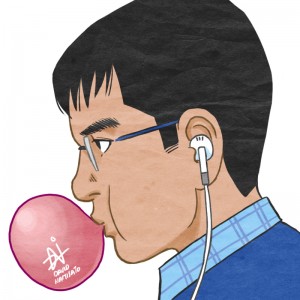
"The JET Programme mantra is “Every Situation is Different,” but so much of the frustrations and the joys that we encounter are very similar. I wanted a vehicle for us to laugh together." (Illustration courtesy of David Namisato)
By Rick Ambrosio (Ibaraki-ken, 2006-08) for JQ magazine. Rick manages the JET Alumni Association of New York (JETAANY)’s Twitter page and is the creator of the JETwit column Tadaima!
It’s probably happened to you over the last few years; you’re sitting at work, or maybe at home and an old buddy of yours from JET forwards you a link. You open it, and it’s a hilarious comic about life as a JET skillfully drawn with a mix of humor and nostalgia that pretty much makes your day. Life After the B.O.E. by David Namisato (Aomori-ken CIR, 2002-04) has given many a JET Alum a good laugh. If you’re anything like me, you’ve thought, “If this was a book, it would be a perfect Christmas present for those guys I still keep in contact with.” Well, David is happy to oblige.
David has now published a book of those comics, and we were lucky enough to catch up with him and pick his brain about it. With his comics popping up on other sites, it seems even a wider audience is getting into David’s work. In this exclusive interview, we ask him about his time on JET, his inspirations, and what he’s looking to do in the future.
What made you decide to publish this book?
I wasn’t planning to do a book initially, but a conversation with Lynn Miyauchi, JET Program Coordinator at the Consulate-General of Japan in Seattle, about the benefits of having a printed book (having something to read in your hands, something you can give as a gift) changed my mind.
So how did you get into art? Were you inspired at all by Japanese art/manga/etc.?
I drew a lot throughout childhood and dreamt of being a comic book artist. I grew up on a healthy diet of manga.
What brought you to Japan?
I was in the process of dropping out of animation school, and didn’t want to do anything art-related. I thought of some of the other skills I had, and I thought that the JET Programme would be an excellent way to transition myself in to a completely different career path.
A (Culturally) Stimulating Interview with the Insatiable Asa Akira

“I think I have a lot of Japanese culture ingrained in me. Just from being from a Japanese family, living in Japan. The whole ‘respect your elders,’ that, to me, is the main thing that’s different between America and Japan.”
Porn porn
By Michael Karns (CIR Kobe-shi, 2001-02) for JQ magazine. Michael is an avid photographer.
The winner of five AVN Awards (like the Oscars, but without Cuba Gooding, Jr.), Asa Akira returned to the East Coast last weekend for a rare promotional trip. In the spirit of intensifying relations between our nation and Japan, we spoke with the scintillating 25-year-old superstar/native New Yorker about her Japanese roots, her favorite anime films, and the deeper cultural points that America and Japan can swap with each other.
Regarding your Japanese heritage, where is your family originally from?
My mother’s side of the family is from Osaka and my father’s side is from Tokyo, but they live in Yokohama.
You went to an American school growing up.
I did, a very prestigious American private school. It was nice.
When Japanese students relocate to America, it can be difficult adjusting. How was it for you relearning the way of life here?
I was born in New York City and I moved to Japan when I was six, so I already had a little America experience, but it was definitely a huge culture shock. Kids in Japan are really good, even American ones. So coming to New York was like, “Oh my God, these kids are 12 years old and they’re doing drugs!” It was definitely a huge culture shock, and I totally bought into it for a little bit (laughs).
You’ve got an incredible personality…
Thank you.
What do you attribute this to?
I grew up around boys; I think that has a lot to do with my sense of humor. Me and this other girl were always the only two girls in this group of boys, so I think we grew up with a really good sense of humor, you know?
So are you kind of like an otemba (tomboy)?
Yeah (laughs).
That’s my type, by the way.
Oh, good (laughs).
Regarding Japanese culture, what things do you like the most about it? Are there any films or other things that you point to as an inspiration?
I think I have a lot of Japanese culture ingrained in me. Just from being from a Japanese family, living in Japan. The whole “respect your elders,” that, to me, is the main thing that’s different between America and Japan. People in America treat old people like [expletive].
I love my grandmother, but I know what you’re talking about.
(Laughs) And they just don’t listen to older people. I think that’s weird. So that would be the main thing.
Justin’s Japan: Interview with the English Dub Cast of ‘Dragon Ball Z’ at New York Comic Con
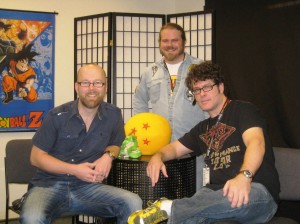
One down, six to go: Voice actors Christopher Sabat, Justin Cook, and Sean Schemmel of 'Dragon Ball Z.' (Justin Tedaldi)
By JQ magazine editor Justin Tedaldi (CIR Kobe-shi, 2001-02) for Examiner.com. Visit his page here for related stories.
To celebrate the 15th anniversary of its English-language debut, Dragon Ball Z is coming to Blu-ray for the first time in America. The November release of Dragon Ball Z Level 1.1 contains the first 17 episodes of the anime series that dominated Japan’s pop culture scene in the 1990s and later, the rest of the world. This newly remastered collection restores the original, director-approved color scheme and 4:3 aspect ratio in stunning 1080p HD, and each volume will include rare never-before-seen special features.
In this exclusive interview conducted at New York Comic Con/Anime Festival (where I also talked with Stan Lee), I spoke with three of the English dub cast members: Christopher Sabat (Vegeta/Piccolo/Yamcha/voice director), Justin Cook (Raditz/Super Buu/ADR engineer), and Sean Schemmel (Goku/King Kai/Nail) about the release, their favorite Dragon Ball memories, and the proper context for discussing one’s favorite cartoon crush.
Regarding your approach to the characters’ voices, how much of the original Japanese voice work did you watch? For the voices you replaced, how much of that did you take into consideration?
Chris: At the start, a lot of consideration was taken to the original voices, and when I say original voices, I mean the Canadian cast [whose English dub work aired from 1996-98], because at the time [Dragon Ball’s North American producers] FUNimation had decided for a multitude of reasons that it was just physically impossible for them to record in Canada any longer. It was difficult to keep the actors consistent on the roles, because a lot of the Canadian actors were cast in other things, and sometimes it would make their job difficult. In fact, they had to recast Goku several times in Canada; they didn’t want to do that anymore. And it also made more sense to be closer to the parent company, so they moved it all down to Fort Worth.
We tried to take a lot of care at the beginning to match the Canadian cast, only because we didn’t want it to be too much of a shock, and when I say “we” I guess I mean the people who hired me—they didn’t want it to be too much of a shock to the American culture when they changed out these voices. And to be honest, when we first started recording this, we didn’t really have access to the Japanese versions of the show; we were dubbing off the Spanish version of Dragon Ball Z. So if we ever listened to the original language on the tape, it was like (speaks in a rapid mock Spanish): “Goku! Dragon Ball Zeta!” [Goku’s wife] Chi-Chi’s name was Milk.
We were just trying to keep it consistent to the first 68 episodes, and it wasn’t until later that we were redubbing the show that we actually started getting in the real Japanese versions of the show and had the technology to be able to quickly preview the Japanese files. We didn’t even have digital files yet, and sometimes we didn’t even get all the original materials that had the Japanese track on it; sometimes we were lucky if it had any sound on the tape at all…the [original] Japanese wasn’t an option.
Have you been to Japan before? If not, what would you want to do there?
Sean: I have plenty ideas about what I want to do in Japan. I have not been to Japan; I really want to go. My goal is to become a background character in an anime, so I can say this (with mock surprise): “Nani?!” (what) and that’s it. I want it to be one line, to be a Japanese seiyū [voice actor]. Give me something longer than that (in a gruff voice): “Ware ware…” (we) something, but just one line; that’s my goal. And, to meet Masako Nozawa [the original voice of Goku] and maybe, if I were lucky, [Dragon Ball creator] Akira Toriyama, but that’s probably never going to happen.
If you met Toriyama-sensei, what would you ask him?
Sean: I would just thank him, because when you think about it, here’s this guy that draws this comic book, there’s this massive explosion—that I’m on the periphery of, if you think about it—[that] radically changed my life forever. So I’d be extraordinarily grateful to that guy.
Read the complete story here.
Justin’s Japan: Interview with cartoonist Adam Pasion on ‘Aftershock’ and ‘Sundogs’

"'Aftershock' is supposed to communicate how far-reaching the influence of Japan has been on cartoonists all over the world, and how we feel in a moment like this. I guess more than an open letter, it's a get well card." (Courtesy of Adam Pasion)
By JQ magazine editor Justin Tedaldi (CIR Kobe-shi, 2001-02) for Examiner.com. Visit his page here for related stories.
For the past several years Adam Pasion has been living in Nagoya, which he calls “Japan’s best kept secret.” An editor and illustrator for RAN magazine, he is also a co-owner and English teacher of SpeakEasy Language School. As the creator of his own comic diary series Sundogs, the San Jose native was profiled in The Japan Times earlier this year, and the strip has since been collected into three books, providing a daily document of Pasion’s life in Nippon with his growing family from 2008 through 2010.
His latest project is Aftershock: Artists Respond to Disaster in Japan, a global response to the combined disasters of this year’s Tohoku earthquake, tsunami and nuclear meltdown. Edited and complied by Pasion and representing over 35 contributors from five continents, including Jeffrey Brown, Ben Snakepit, and JET alum Lars Martinson (Fukuoka-ken, 2003-06), the book shares their thoughts and feelings about a freshly devastated Japan in manga form. In this exclusive interview, Pasion reveals the inspiration for this unique project, his favorite Sundogs moments, and what’s next on his plate.
Tell us about your history with Japan. How did it cross your radar growing up?
My hometown had a pretty big and vibrant Japantown, and we would often go there and eat or go window shopping as a kid, but beyond that Japan was just a point on a map for me. In college I worked with a Japanese girl who tried to get me to go to some club for Japanese exchange students. I reluctantly went and was surprised by how much I enjoyed it—tons of delicious Japanese food and lots of cute girls. I started going regularly, and that is where I met my wife. I started taking a Japanese class, and through that class I got offered a position working in Japan for a summer. After spending a summer working here, I fell in love with the place. Several years later, my wife and I found out that we were going to be having a baby, and we decided to come have the baby close to my wife’s family here in Nagoya. Four years, two kids and a couple belt sizes later, and we are still here.
How did Aftershock come together following the earthquake and tsunami of March 2011?
Like most people out there who have any sort of connection to Japan, I felt paralyzed by the whole thing. Here were all these terrible events unfolding just a few hundred miles up the coast and there was nothing I could do about it. I had a sort of “survivor’s guilt” by proxy. When the medical teams and disaster relief groups started to come in I felt even more uneasy, realizing that it was in fact possible to help, just impossible for me to help. Every place I looked told me “just donate money for now.” I felt like I was sitting in the waiting room, waiting for the doctors to do their job. All I could do was wait, and offer to help with the hospital bills.
Then one night my brain was racing as I was trying to go to sleep, and the idea occurred to me to find a way to help out within my own skill set, which is where the idea for this book came about. I jumped out of bed and immediately fired off about 10 e-mails to the cartoonists I knew personally, and the response was 100 percent positive. I contacted Top Shelf Productions after that on a whim and they were into the idea right away. I still felt like any moment it would vanish in smoke until out of the blue I started getting tons of requests to join the project and submissions from people I had never met. The word had gotten out and was spreading quickly, and at that point I knew we were on to something. When things with Top Shelf didn’t pan out, the project already had way too much momentum to give up, which is why I decided to self-publish it. When the book was funding on Kickstarter, I actually had people thanking me for the chance to pledge money to the project. I still can’t wrap my head around that.
What are your goals with releasing Aftershock?
This has been a major point of misunderstanding from a lot of people. The main goal of this project is not fundraising for a charity. That is certainly a big part of it, but the distinction is that even if it fails to make a lot of money, I think it is incredibly meaningful in its own right. From the beginning I have described this book as a kind of “open letter” to the nation of Japan from the international comics community. It is supposed to communicate how far-reaching the influence of Japan has been on cartoonists all over the world, and how we feel in a moment like this. I guess more than an open letter, it’s a get well card. It is also a timepiece that encapsulates the popular sentiment of the world at one moment. I want all the contributors to look back on this book and remember exactly where we were and how we felt while we were still in the thick of it. I think we have succeeded in this goal. We have created a lasting piece of art that captures an important moment in time and the zeitgeist that goes along with it.
Some people have misunderstood the purpose of the project as a way to donate to the disaster. It certainly is [all proceeds from Aftershock will be donated to relief efforts in northeast Japan—Ed.], but if your main purpose is to make a donation, then there are much more direct ways to do it than to buy this book. I want the book to be successful in its aim to raise as much money as possible to help in the rebuilding process, but I also want people to actively become involved. Read the stories and see why we care so much. I want it to motivate people to join the process of rebuilding and I want it to help people feel like we are all in this thing together.
For the complete story, click here.
CBC News Article on the MOFA/JET Alum “Return to Tohoku” Program
**********************
Here’s a link to a nice article on Canada’s CBC News website titled, “Repairing Japan’s image, one teacher at a time: 20 former teachers return to view progress in Japan six months after the earthquake and tsunami.” (By Amber Hildebrandt)
“Japan is employing an unusual method in its attempt to rejuvenate its faltering international image after a massive earthquake and tsunami devastated the country exactly six months ago on March 11.
It comes in the form of a petite, brunette teacher from Canada: Tanya Gardecky, 25, of Aurora, Ont.
Or rather in the form of 20 foreigners from around the world who once taught English in the devastated regions and now have gone back, on Japan’s dime, to view the progress for themselves.
Each was once a teacher with the government-funded JET Programme and taught in the public school system.”
CLICK HERE to read the rest of the article


